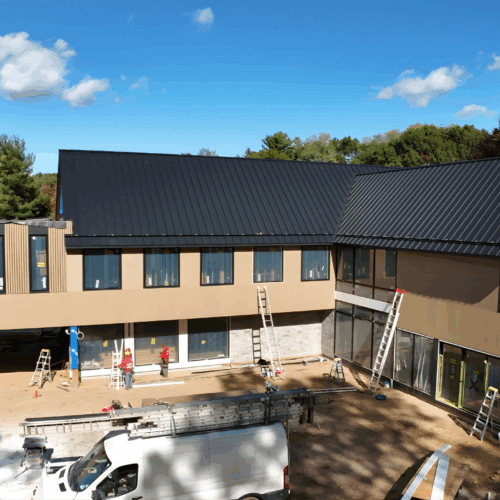The perfect building material is one that requires little to no maintenance after finishing construction. Western Red Cedar is one of the most multifaceted lumbers as it is not only aesthetically striking, but naturally resilient in harsh conditions. With a strong resistance to the elements, its susceptibility to erosion and invasive insects is minimal.
SELF-PROTECTIVE QUALITIES
Structures made from Western Red Cedar will generally outlast those made from softer selections, and with its deeply rich and rustic warm tones, this evergreen will be sure to evoke an earthy, elegant atmosphere. Since these coniferous giants are most commonly found in damper regions like the Pacific Northwest where microorganisms are abundant, they have developed self-protective qualities. The spicy, aromatic essence of Western Red Cedar is not only a pleasure for the senses, but it’s natural secretion of oils and a chemical called Thujaplicin makes it repellent to insects like moths, temperature related stress, and any fungal growth that would cause it to rot.

SUPERIOR WOOD
Western Red Cedar is superior to all other coniferous woods as it is lightweight with exceptional dimensional stability, meaning it has a very low shrinkage rate, and is resistant to warping or twisting. When completely dried, it is about thirty percent lighter than woods like mahogany, making it an easier material to transport and handle. Low density lumber contains more cellular cavities filled with air, helping to dampen sonic vibrations, and enhances its thermal insulation. The extra air pockets within the wood protect interiors from extreme temperatures, making it an ideal selection for siding and decking. Western Red Cedar is also hygroscopic, which means that it will both absorb and discharge any moisture, keeping it in equilibrium with the surrounding atmosphere.
RENEWABLE, BIODEGRADABLE, AND SOURCED SUSTAINABLY
The visual appeal and resilience of a structure’s landscape is essential, but the most important qualities of building materials are environmental performance and sustainability. Synthetic building materials generate greenhouse gases, while natural wood actually removes them from the atmosphere. Western Red Cedar is renewable, biodegradable, and sourced from sustainably managed forests.








